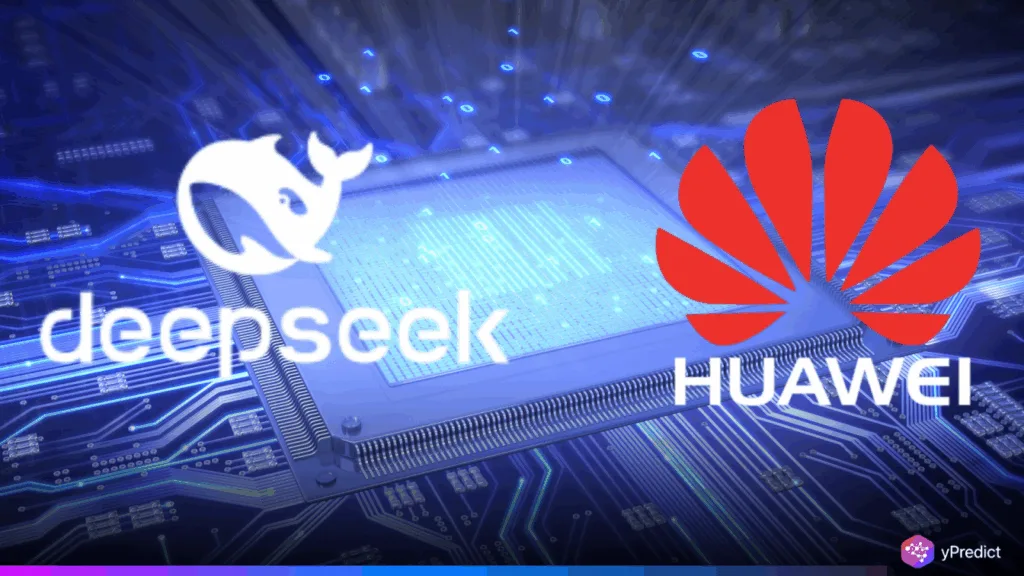
On August 14, 2025, DeepSeek’s next-generation AI model launch was delayed due to issues with the Huawei chip powering it. The model, tentatively named R2, was meant to follow the highly successful DeepSeek-R1, which had previously challenged the dominance of OpenAI and Meta. This is due to technical and geopolitical complexities as DeepSeek shifts its system running on Nvidia hardware to the Huawei chip since U.S. sanctions have limited access to GPUs. The news brings on concerns over whether the Huawei chip should be capable of supporting the needs of training large language models or whether the loss to China will make the country take a step back in the race in regard to AI and semiconductors globally.
DeepSeek’s Path and Technical Challenges
DeepSeek’s R1 gained international attention in January 2025 after outperforming OpenAI’s o1 and Meta’s Llama on multiple benchmarks. Nvidia specifically designed the H800 GPUs to bypass earlier U.S. export restrictions, and when tightened sanctions later banned those GPUs, DeepSeek pivoted to the Huawei chip as a domestic solution.
The Huawei, specifically the Ascend 910, has been marketed as China’s answer to Nvidia’s dominance in AI hardware. Reports claim it achieves about 60% of the H100’s inference performance with optimization and can support AI training. However, the current delay suggests that while the Huawei chip is promising, it may still face stability, efficiency, or compatibility issues when handling massive training runs for a next-generation model like R2. These limitations could affect DeepSeek’s ability to maintain its pricing advantage, which undercuts OpenAI’s API costs by a wide margin.
Furthermore, U.S. export rules now prohibit using the Huawei chip anywhere globally if it contains restricted American technology. This regulatory pressure adds risk for both DeepSeek and Huawei, potentially forcing further engineering workarounds. For now, the Huawei chip’s readiness for large-scale AI training remains an open question, with the delay signaling that DeepSeek may need more time to optimize performance.
Geopolitical Context and Industry Impact
The delay of DeepSeek’s R2 because of Huawei chip issues highlights the growing entanglement of AI development with international trade restrictions. The U.S. government’s May and June 2025 guidance explicitly targeted the Huawei chip, claiming its design incorporated prohibited American technologies. This has complicated DeepSeek’s reliance on it, even within Chinese data centers. Economically, this delay may influence investor sentiment. Earlier this year, DeepSeek’s R1 launch reportedly triggered a $1 trillion market sell-off, underscoring the perceived threat to Western AI dominance.
In these cases, the Huawei chip that contributes to the sluggishness of R2 could alleviate the competitive tension on American companies. However, the semiconductor industry in China is developing fast, and manufacturing developments are reducing the distance between China and the worldwide leaders. Provided Huawei perfects the chip and resolves the bottlenecks in performance, DeepSeek could again gain momentum, although the recent lag demonstrates the dangers of having only one politically controversial source of hardware to reach.
Conclusion
The use of the Huawei chip by DeepSeek in its R2 model has turned into an asset as well as a weak point. As much as the chip symbolizes the desire of China to be independent in the field of semiconductors, its performance constraints at the moment and the burden of the U.S. Export restrictions have made it slow. Such latency highlights the vulnerability of international AI supply chains, whereby, quite often, political choices will interrupt technical roadmaps. It is doubtful that Huawei chip optimizations will arrive in time to keep DeepSeek competitive. What is apparent is that the AI race just became as much about hardware sovereignty as it is algorithms and the Huawei chip will be front and center of that competition.






